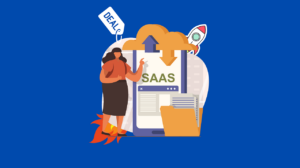UX trends are more important than ever to follow. Studying UX trends can help inspire your design process, improve your customer experience, and boost your marketing efforts. UX design is fast becoming the most important component of software and hardware products, and it’s important to know how designers are innovating, streamlining, and subverting the user experience.
User experience, or UX, is extremely important for every software product. When Steve Jobs founded Apple, this idea of form over function was highly unusual in the software space. In Jobs’ view, you needed to consider software and hardware with the customer’s experience in mind, then build the technology.
1. Minimalism
Ever enter an app with an impressive splash screen, tons of buttons, and functionality? It was probably a beautiful app — but you probably had to take a moment to figure out how to use it effectively. Apps that have exactly what they need and nothing more are becoming more popular for this very reason. When we aren’t inundated with a fancy GUI, we can more easily make sense of how to use the GUI.
The best software products shouldn’t take a second to figure out. Think of Google’s search engine — it was revolutionary because it simply was a text input box against a white screen. Now that minimalistic style isn’t so counterculture anymore — it’s the norm. App makers are looking for more ways to declutter, optimize, and simplify the experience.
2. Colorful screens
Vibrant colors are all the rage in 2018. While sleek, clean, minimalist apps are proving to be the most stylish this year, this doesn’t mean your color palette needs to be toned down. Vibrant colors can be a great complement to minimalist design. Bright colors can help guide the users eyes, group functionality, and add a powerful aesthetic to an otherwise stripped-down application.
Bright colors have an appeal in their own right, but making your app look more fashionable is just one of the reasons this trend is on fire. Vibrant colors are not only beautiful, they’re functional. In fact, UX design has begun to employ colors as indicators of functionality. That is, your screen turns different colors when different actions are performed.
3. Full-screen Navigation
UX designers are starting to realize that space is quite a valuable thing when making an interactive, 2D product. Instead of asking the user to fill out an entire form on a single scrolling page, UX designers are sending users to multiple pages, each with a only one or two actions. This makes navigating an app easier, and translates into less frustration from the user. Tiny, obvious steps can make your app more intuitive, less daunting, and more user-friendly.
4. Linear journeys
Some software applications overload users with choices. Software designers may think this is a good thing — supplying the user with lots of functionality at once — and it can be. Sometimes, though, it can get in the way of the primary function of your software product. For this reason, linear user journeys are becoming more popular. Guide your user through your app, one step at a time, take them from step one to the end step without interruption. Following this trend can help your users make more sense out of app, and they may report more satisfaction with your product’s ease-of-use.
Conclusion
Most tech companies still have a backwards way of creating technology. They engineer a product with all the functionality they want, then begin work on making it user friendly. All too often, creating a serviceable user experience is impossible this late in the game, however.
Thinking of the user experience before you even begin prototyping will help your software product greatly. This is why it’s so very important to stay up-to-date on the latest UX trends. Even if you aren’t actively working on a project, take a few moments out of each day to see how UX designers are changing how we interact with technology.





